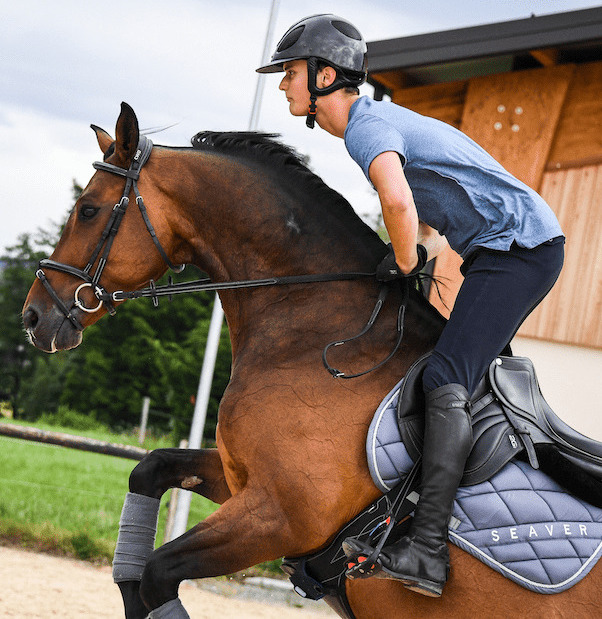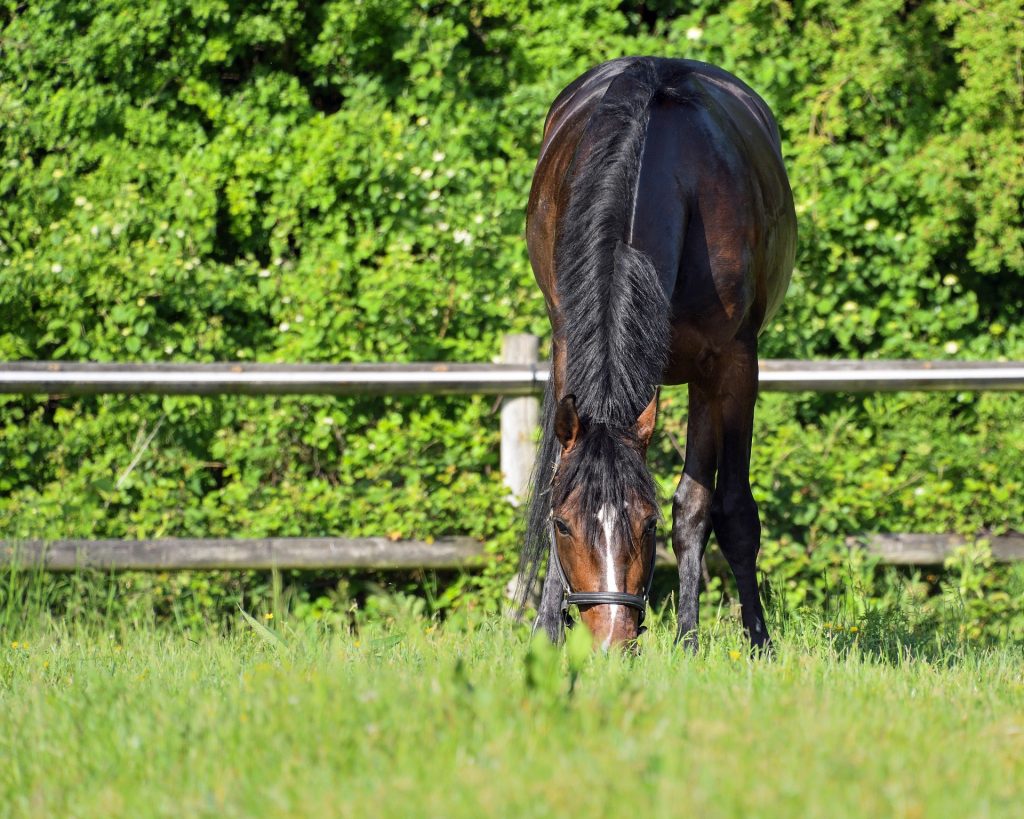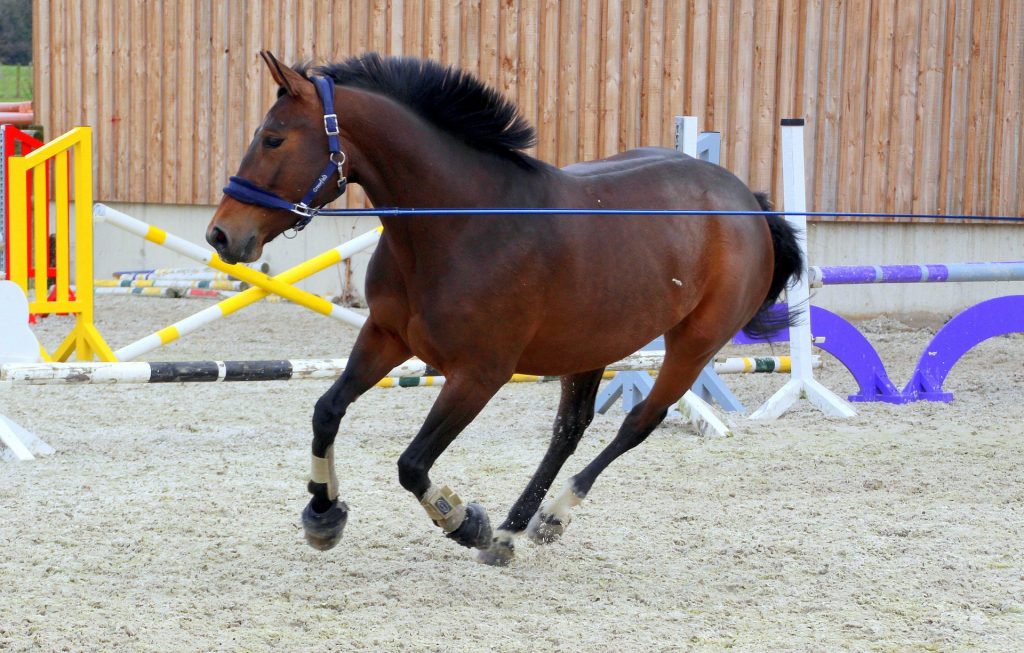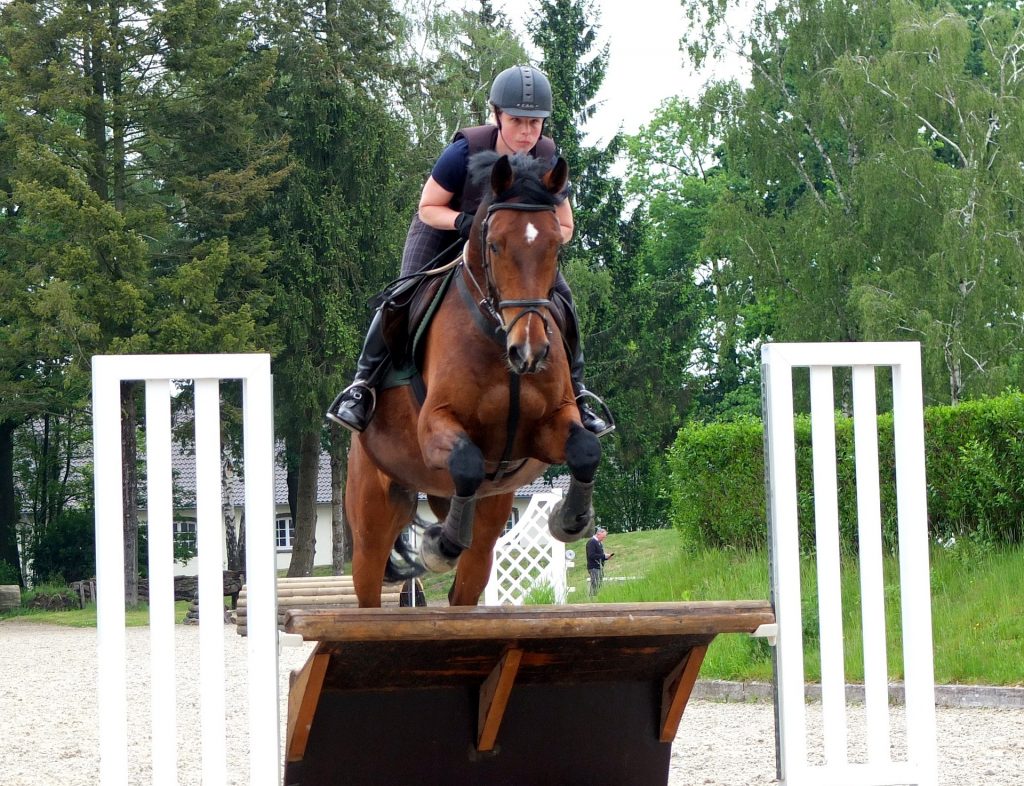-15 % sur votre première commande
rentrez votre email pour recevoir le code


Le paiement x10 disponible sur la boutique ! Commandez votre airbag SAFEFIT pour 50€/mois
mercredi, 23 août, 2017
Now that the holidays are over, it is time to go back to school/work. After sunbathing relaxed in a long chair for weeks, it is high time to get back in the saddle.

Did your horse also enjoy a well-deserved vacation time? Here are some tips to best approach this period and prepare for the new season ahead.
Bringing a horse back into work after a few weeks off must be done gradually. Going to a horse show or having intense/intensive training sessions the first week back is out of the question!
“If the horse was in good physical condition before the break, providing it did not last for more than / exceed 4 or 5 weeks, then bringing him back to shape can go pretty quickly.” – Michel Robert
Before resuming training, it is important to check the health of your horse. You should plan a visit to the veterinarian, the farrier, and even the osteopath if necessary.
In addition to conducting a general health check and pointing out some specific issues to treat or monitor, the vet will be able to advise you on a proper training schedule, a diet adjustment if needed… The farrier will take a look at your horse’s feet, prescribe appropriate care, and adapt the shoes to the more intensive work to come.
The training rhythm must be adapted to the horse and his physical condition after his ‘vacation’ time. In any case, it is advised to start by short training sessions, with gradually increasing difficulties, and to alternate with rest periods.
“The first rule to get a horse (back) in shape is to ‘split’ the work, that is to alternate between efforts and recuperation periods.” – Michel Robert
Ground work, whether liberty work or work on a lunge line, is a good way to first start developing the horse’s muscles under proper conditions and without the constraint of a rider’s weight.
Begin with a fairly large circle at the walk and trot. As soon as you feel your horse attentive and responsive, progressively vary the sizes of your circles and ask for some transitions. Of course, you should do this exercise on both sides.

The following days, you can start cantering but do favor large circles in order to help your horse keep his balance. Also, ask for transitions frequently to keep his attention. Progressively insist on widening and narrowing the circle, but never putting him in difficulty. You can gradually increase the length of your sessions, and add draw reins or side reins if needed.
If your stable has a walker, use it! This exercise can be very beneficial to your horse; by soothing any stiffness and soreness, as well as gently warm up his muscles.
Once lunging or liberty work does not seem to tire your horse anymore, it is time to saddle up.
The first riding sessions should be light. Start with walking and trotting, just like with a young horse. Go for a hack two or three times a week if possible to maintain your horse’s morale. When outside, look for varied landscape with drops and climbs in order to work on your horse’s breathing, and progressively ask for more intense work. End with neck extension exercises and other loosening exercises in order to stretch his back and avoid any stiffness and soreness.
Only then, more ‘serious’ work can begin. Ask your horse more difficult exercises; leg yields, shoulders in, half-passes, etc. You can also use introduce ground poles work at the trot or cantor to elevate your horse’s back. When you feel ready, add some fences. Begin with 2 or 3 jumps and progressively increase the number and height of the jumps. You will be able to use your Seaver girth to monitor your jumping performances during your sessions (height and number of jumps, jumping path…). Always remember to be gradual and do not forget rest sessions.
“The horse’s body will progressively strengthen with jumping sessions. It is ok to jump small fences almost every day. However, cutting corners by starting to jump too quickly and/or jumping too high, will inevitably have consequences. Way too many horses injure themselves when landing and do not want to jump anymore because they were not properly physically prepared.” – Michel Robert

Theoretically, after 3 to 4 weeks your horse will be ready to go back to shows. Feel free to start with lower-level classes to progressively get you and your horse used to competing again.
See you soon for another article,
The Seaver team